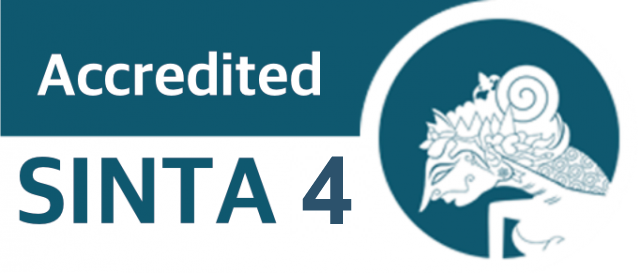Adsorption-Based Laboratory Hazardous Waste Treatment with a Combination of Biochar, Zeolite, and Activated Alumina as an Environmentally Friendly Solution
DOI:
10.29303/jpm.v20i6.10180Published:
2025-10-27Issue:
Vol. 20 No. 6 (2025)Keywords:
Activated Alumina; Adsorption; B3 Waste; Biochar; Effectiveness; ZeoliteArticles
Downloads
How to Cite
Downloads
Metrics
Abstract
Hazardous and Toxic Waste (B3) from laboratories, especially those containing heavy metals (Hg and Cr) and several physical factors such as pH, TSS, and color, poses a serious threat to the environment if not managed properly. This study aims to estimate the adsorbent for the development of laboratory-scale wastewater treatment equipment based on the adsorption method using biochar, zeolite, and activated alumina. The research method involves preparing adsorbent materials, testing their effectiveness in reducing the content of heavy metal pollutants, and designing a waste treatment device. The combination of biochar, zeolite, and activated alumina was chosen due to their complementary abilities in removing heavy metal content from B3 waste in the Soil Chemistry laboratory. The treatment results showed significant reductions (p < 0.05) in heavy metal (Hg and Cr) levels in laboratory waste. The optimal combination is a formulation of biochar, zeolite, and activated alumina (1:1:1). Innovations in adsorbent technology for processing heavy metal waste in soil chemistry laboratories can be applied and further developed to create a clean and healthy environment.
References
I. W. Redhana, “Identifikasi bahan kimia berbahaya yang digunakan dalam praktikum kimia SMA,” Prosiding Seminar Nasional MIPA, vol. 9, 2013. [Online]. Available: https://ejournal.undiksha.ac.id/index.php/semnasmipa/article/view/2679/2263
W. Larastika, Studi awal karakterisasi dan pengelolaan limbah bahan berbahaya dan beracun (B3) di Universitas Indonesia, Skripsi, 2011.
N. Anggraini, T. E. Agustina, and F. Hadiah, “Pengaruh pH dalam pengolahan air limbah laboratorium dengan metode adsorpsi untuk penurunan kadar logam berat Pb, Cu, dan Cd,” Jurnal Ilmu Lingkungan, vol. 20, no. 2, pp. 345–355, 2022, doi: 10.14710/jil.20.2.345-355.
Y. Yurnalisdel, “Analisis pengelolaan limbah bahan berbahaya dan beracun (B3) di Indonesia,” Jurnal Syntax Admiration, vol. 4, no. 2, pp. 201–208, 2023, doi: 10.46799/jsa.v4i2.562.
G. Ketsela, Z. Animen, and A. Talema, “Adsorption of lead (II), cobalt (II) and iron (II) from aqueous solution by activated carbon prepared from white lupine (GIBITO) HSUK,” Journal of Thermodynamics and Catalysis, vol. 11, no. 2, pp. 1–8, 2020, doi: 10.4172/2157-7544.20.11.2.203.
S. Kumari, J. Chowdhry, M. Kumar, and M. C. Garg, “Zeolites in wastewater treatment: A comprehensive review on scientometric analysis, adsorption mechanisms, and future prospects,” Environmental Research, vol. 260, 119782, 2024, doi: 10.1016/j.envres.2024.119782.
A. Aynuddin and R. Rosalina, “Pengolahan logam berat kromium dalam limbah cair laboratorium dengan metode koagulasi, adsorpsi, dan ozonasi,” Warta Akab, vol. 46, no. 2, 2022, doi: 10.55075/wa.v46i2.102.
K. Vijayaraghavan et al., “Bioretention systems for stormwater management: Recent advances and future prospects,” Journal of Environmental Management, vol. 292, 112766, 2021, doi: 10.1016/j.jenvman.2021.112766.
F. Younas et al., “Current and emerging adsorbent technologies for wastewater treatment: Trends, limitations, and environmental implications,” Water, vol. 13, no. 2, 215, 2021, doi: 10.3390/w13020215.
S. Rajoria, M. Vashishtha, and V. K. Sangal, “Treatment of electroplating industry wastewater: A review on the various techniques,” Environmental Science and Pollution Research, vol. 29, no. 48, pp. 72196–72246, 2022, doi: 10.1007/s11356-022-18643-y.
T. Kopac, “Emerging applications of process intensification for enhanced separation and energy efficiency, environmentally friendly sustainable adsorptive separations: A review,” International Journal of Energy Research, vol. 45, no. 11, pp. 15839–15856, 2021, doi: 10.1002/er.6944.
C. Barrow, Environmental Management for Sustainable Development, 2nd ed. London: Routledge, 2006, doi: 10.4324/9780203016671.
M. A. Mallah et al., “Polycyclic aromatic hydrocarbon and its effects on human health: An overview,” Chemosphere, vol. 296, 133948, 2022, doi: 10.1016/j.chemosphere.2022.133948.
M. Hjort, D. Skobelev, R. Almgren, T. Guseva, and T. Koh, “Best available techniques and sustainable development goals,” International Multidisciplinary Scientific on Earth and Geosciences (SGEM Green), vol. 19, no. 4, p. 185, 2019, doi: 10.5593/sgem2019V/4.2/S06.025.
Pemerintah Republik Indonesia, PP No. 22 Tahun 2021 tentang Penyelenggaraan Perlindungan dan Pengelolaan Lingkungan Hidup, Jakarta, 2021. [Online]. Available: https://ppkl.menlhk.go.id/website/filebox/999/2107071507067
A. Chanda, A. Akhand, A. Das, and S. Hazra, “Cr, Pb and Hg contamination on agricultural soil and paddy grain after irrigation using metropolitan sewage effluent,” J. Appl. Environ. Biol. Sci., vol. 1, no. 10, pp. 464–469, 2011.
A. Zafarzadeh, A. Bay, Y. Fakhri, H. Keramati, and R. Hosseini Pouya, “Heavy metal (Pb, Cu, Zn, and Cd) concentrations in the water and muscle of common carp (Cyprinus carpio) fish and associated non-carcinogenic risk assessment: Alagol wetland in the Golestan, Iran,” Toxin Reviews, vol. 37, no. 2, pp. 154–160, 2018, doi: 10.1080/15569543.2017.1386684.
W. A. Ta’bi, Sintesis dan karakterisasi komposit biochar magnetit sebagai adsorben ion Pb²⁺ dan Cu²⁺ pada limbah cair industri percetakan sablon, Disertasi Doktor, Universitas Hasanuddin, 2024.
M. S. Akhtar, S. Ali, and W. Zaman, “Innovative adsorbents for pollutant removal: Exploring the latest research and applications,” Molecules, vol. 29, no. 18, 4317, 2024, doi: 10.3390/molecules29184317.
M. Redi et al., “Zeolite synthesis based silica from Saccharum officinarum L. with black stem using the hydrothermal method,” Jurnal Pijar MIPA, vol. 19, no. 3, pp. 473–478, 2024, doi: 10.29303/jpm.v19i3.6541.
A. Azwarudin, H. Sholehah, D. Karno, and M. Majdi, “Suitable technology for a household scale workshop systems for the treatment of wastewater,” Jurnal Pijar MIPA, vol. 18, no. 3, pp. 430–435, 2023, doi: 10.29303/jpm.v18i3.4927.
R. Amelia, Biochar sekam padi yang termodifikasi magnetit sebagai adsorben logam berat timbal (Pb) pada limbah cair industri batik Yogyakarta, Disertasi Doktor, Universitas Islam Indonesia, 2025.
Author Biographies
Hendra R. Akhdiyat, Jurusan PSDAL Pasca Sarjana Universitas Mataram
Sukartono Sukartono, Soil Science Study Program, Faculty of Agriculture, University of Mataram
Jasrodi Jasrodi, Soil Science Study Program, Faculty of Agriculture, University of Mataram
Hendra Susana Putra, Integrated Laboratory, Faculty of Medicine and Health Sciences, University of Mataram
License
Copyright (c) 2025 Hendra R. Akhdiyat, Sukartono Sukartono, Jasrodi Jasrodi, Hendra Susana Putra

This work is licensed under a Creative Commons Attribution 4.0 International License.
The following terms apply to authors who publish in this journal:
1. Authors retain copyright and grant the journal first publication rights, with the work simultaneously licensed under a Creative Commons Attribution License 4.0 International License (CC-BY License) that allows others to share the work with an acknowledgment of the work's authorship and first publication in this journal.
2. Authors may enter into separate, additional contractual arrangements for the non-exclusive distribution of the journal's published version of the work (e.g., posting it to an institutional repository or publishing it in a book), acknowledging its initial publication in this journal.
3. Before and during the submission process, authors are permitted and encouraged to post their work online (e.g., in institutional repositories or on their website), as this can lead to productive exchanges as well as earlier and greater citation of published work (See The Effect of Open Access).











